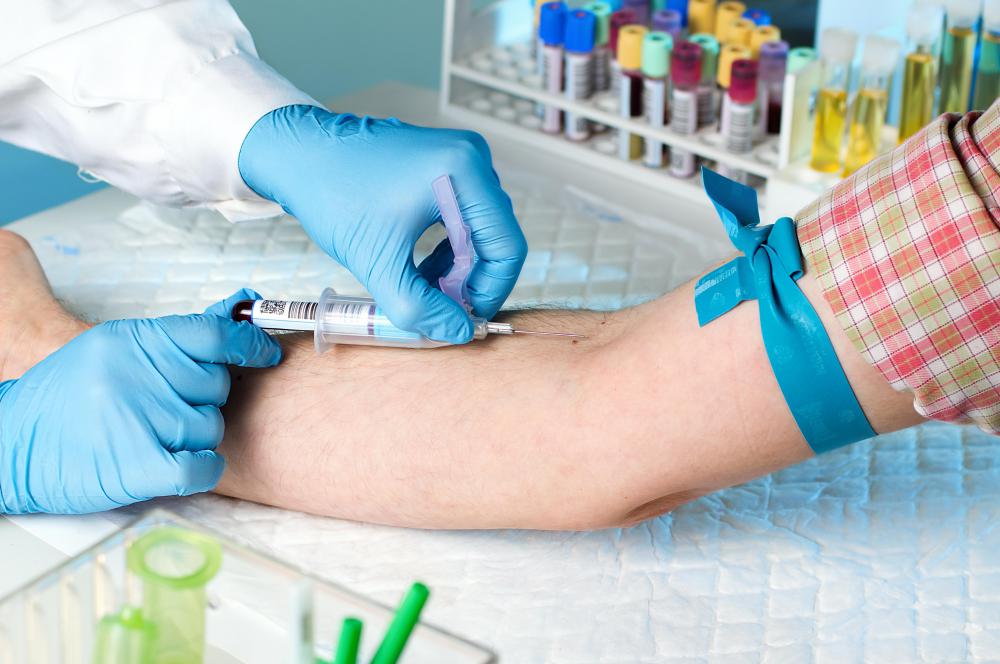At WiseGEEK, we're committed to delivering accurate, trustworthy information. Our expert-authored content is rigorously fact-checked and sourced from credible authorities. Discover how we uphold the highest standards in providing you with reliable knowledge.
What Is an Hs-CRP Test?
When there is inflammation in a person's body, his or her blood has a higher level of a protein called C-reactive protein (CRP). A standard CRP test measures the level of this protein in the blood, and a high-sensitivity CRP (hs-CRP) test is used to measure this level even when it is low. Inflammation or swelling of the arteries is a known risk factor for cardiovascular disease, and an hs-CRP test can help doctors determine the potential for heart problems in a patient.
Inflammation is the body's normal response to certain adverse states, including injury, fever and infection. It also plays a key role in the progression and initiation of cardiovascular disease. Artery inflammation has been linked to conditions such as heart attacks, stroke and peripheral arterial disease. The presence of the CRP in the blood might also indicate an increased risk of restenosis, which is the sealing of an artery that has been treated by angioplasty.

An hs-CRP test, also called an hs-CRP assay, measures the levels of C-reactive protein per liter of blood, and the results are used to assess the patient's risk of cardiovascular disease. A patient who has less than 1 milligram of CRP per liter of blood is considered to have a low risk of cardiovascular disease. A level of 1.0 to 2.9 milligrams per liter of blood is considered to be a sign of intermediate risk, and a test result showing 3 milligrams or more per liter of blood is a sign that the patient is at a high risk for cardiovascular disease.

The hs-CRP test is a relatively simple, widely available test, and it typically is done at the time of a blood test for cholesterol. Although cholesterol tests, which measure the levels of low-density lipoprotein (LDL) and high-density lipoprotein (HDL) in the blood, are helpful for determining the risk of heart disease, hs-CRP tests provide additional information that cannot be gathered by lipid testing alone. Health experts recommend hs-CRP testing for patients who are 55 or older as well as younger patients who are considered to be at risk of heart disease. The body's CRP levels can be temporarily raised by things such as infection and illness, so patients are discouraged from being tested while they are injured or ill.
AS FEATURED ON:
AS FEATURED ON:















Discuss this Article
Post your comments